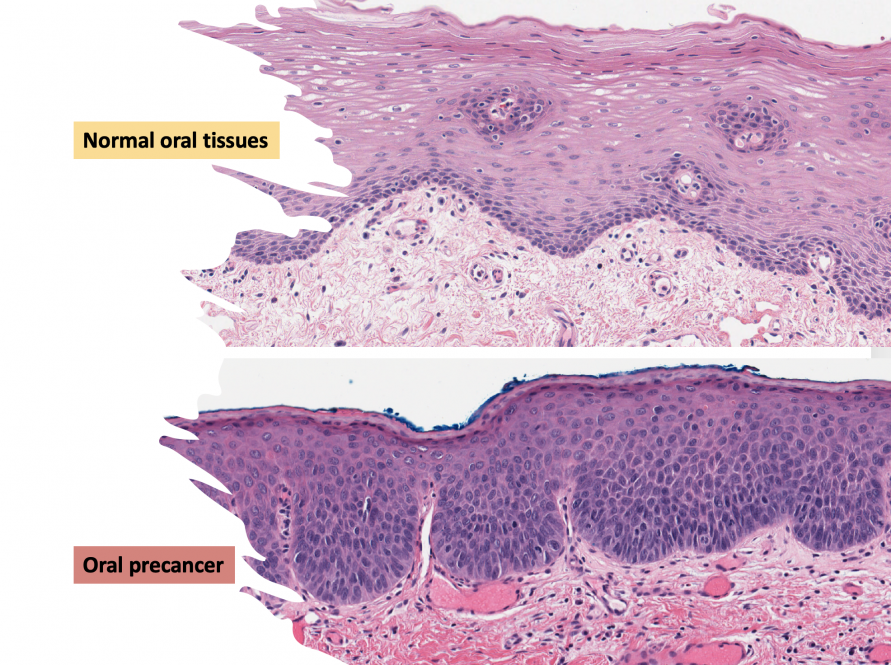Routine oral healthcare – and early diagnosis– is key
Your dental hygienists, dentists, and physicians are trained to screen for and identify suspicious oral findings. Many oral cancers are diagnosed at advanced stages, so early diagnosis is key.
Break up with tobacco, it’s time to quit
Smoking cigarettes and using tobacco products pose a high risk for oral cancer. It’s just as bad for your mouth as it is for the lung, bladder, colon, and heart.
Stay informed, learn about your mouth
In the United States, oral pre-cancer and cancers occur most frequently on the sides and under-surface of the tongue.
Pay attention to growing white patches or non-healing, persistent sores (ulcers) on the sides of the tongue (lateral) or under-surface of the tongue (ventral) or under the tongue (floor of the mouth).
Oral Cancer is different from throat cancer
The majority of oral cancers are associated with tobacco use & heavy alcohol consumption. They present as white patches or persistent ulcers in the mouth.
The majority of throat cancers (tonsillar cancers) are associated with high-risk HPV (Human Papilloma Virus). The most common manifestation is a painless lump in a neck lymph node (cervical node swelling). See your physician if you have a persistent neck swelling for more than 4-6 weeks.
Oral and throat cancers are preventable!
Tobacco cessation, routine oral care, and maintaining a healthy dietary lifestyle is central to preventing oral cancers. For throat cancers, safe sex practices and the HPV vaccine (Gardasil-9) are highly effective in preventing HPV-related throat cancers.
Dr. Easwar Natarajan, professor, Dr. Jenna Ward, assistant professor, Dr. Ellen Eisenberg, professor emerita of Oral and Maxillofacial Pathology, and Dr. Prazwala Chirravur, assistant professor of Oral Medicine all contributed to this article.



